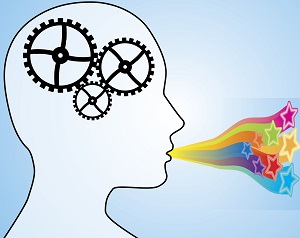01 Aug Section 6 Intro – Language and Dialog
 Dialog: Is this something limited to humans – to sentient beings? Natural Language, its components, acquisition, and use are the subjects of this sixth section of the Understanding Context blog. Here, you will find theories about communication and cognition, along with descriptions of computational approaches to analyzing and automatically generating human language and dialog using computers.
Dialog: Is this something limited to humans – to sentient beings? Natural Language, its components, acquisition, and use are the subjects of this sixth section of the Understanding Context blog. Here, you will find theories about communication and cognition, along with descriptions of computational approaches to analyzing and automatically generating human language and dialog using computers.
| Understanding Context Cross-Reference |
|---|
| Click on these Links to other posts and glossary/bibliography references |
|
|
|
| Prior Post | Next Post |
| Fuzzy Logic | Evolution of Language |
| Definitions | References |
| sentient communication | Allen 1987 |
| Natural Language acquisition | Chomsky 1968 |
| understanding context | Grishman 1986 |
The Gift of Speech
 Since a complete theory of language understanding must include neurological and psychological factors as well as linguistic structures (grammar), we begin with some cognitive assumptions. These assumptions build on the discussions started throughout all the earlier sections of this blog. These will be followed by an analysis of language that seeks to answer two questions:
Since a complete theory of language understanding must include neurological and psychological factors as well as linguistic structures (grammar), we begin with some cognitive assumptions. These assumptions build on the discussions started throughout all the earlier sections of this blog. These will be followed by an analysis of language that seeks to answer two questions:
- What are the parts of language?
- How do the parts interact?
Posts in this section address these questions and many more.
 Because the linkages between cognitive psychology and linguistic performance/production are essential, this section on language intrinsically tied to the Cognitive Psychology section of this blog. It is also tied to the computational cybernetics section, as the fundamental psychological and linguistic assumptions presented here are basic to what comes later. This section describes some of those assumptions before introducing new ideas about grammar and some techniques that may be applied to NLP.
Because the linkages between cognitive psychology and linguistic performance/production are essential, this section on language intrinsically tied to the Cognitive Psychology section of this blog. It is also tied to the computational cybernetics section, as the fundamental psychological and linguistic assumptions presented here are basic to what comes later. This section describes some of those assumptions before introducing new ideas about grammar and some techniques that may be applied to NLP.
| Click below to look in each Understanding Context section |
|---|








